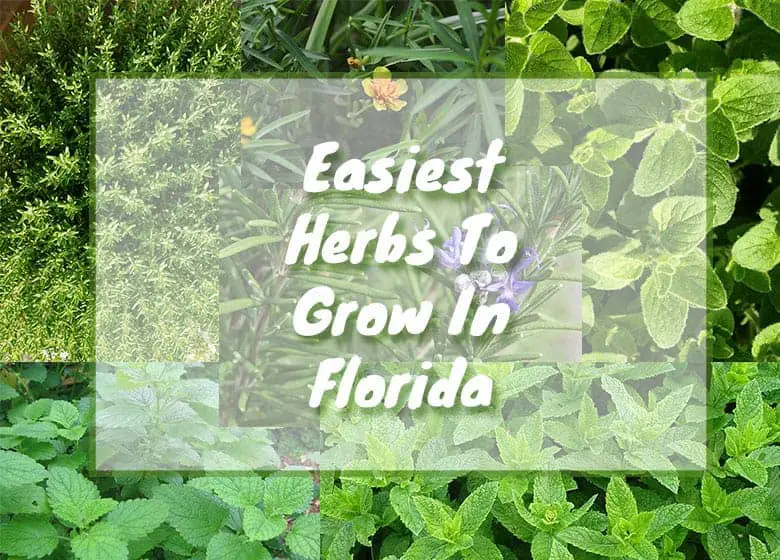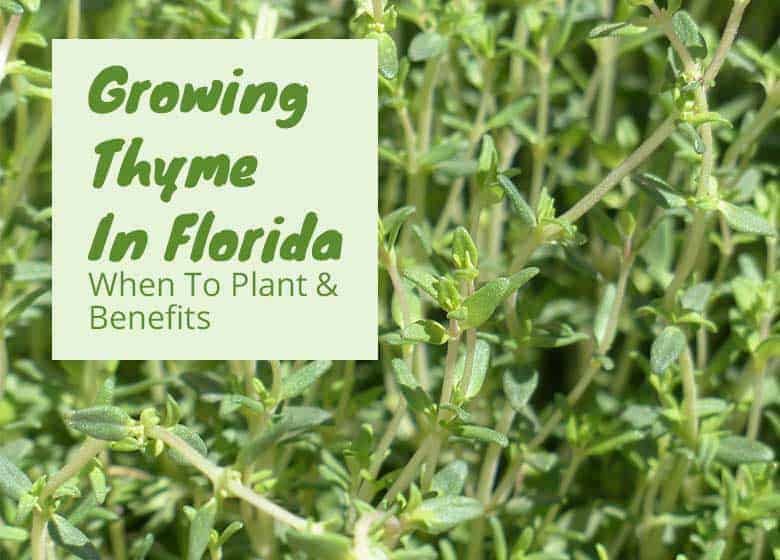
Is it easy to grow thyme in Florida?
There are more than 50 thyme varieties of thyme and most of them will thrive in Florida. Thyme desires full sun, and it is incredibly drought-tolerant. The best time to plant thyme in Florida is early spring.
Thyme grows as a perennial shrub that is indigenous to the Mediterranean.
It is also cultivated in southern European countries like Portugal, France, and Spain. Ancient Greeks regarded the herb as a symbol of sacrifice and courage. Ladies in the Middle Ages would lace scarves with sprigs of thyme, which they gave to their errant knights. The history of thyme includes its use in the reproductive and digestive systems as well as treating melancholy.
It will mostly grow to about a foot, and a half tall, and its leaves are gray-green. Thyme can be identified by its light purple flowers, which attract many pollinators.
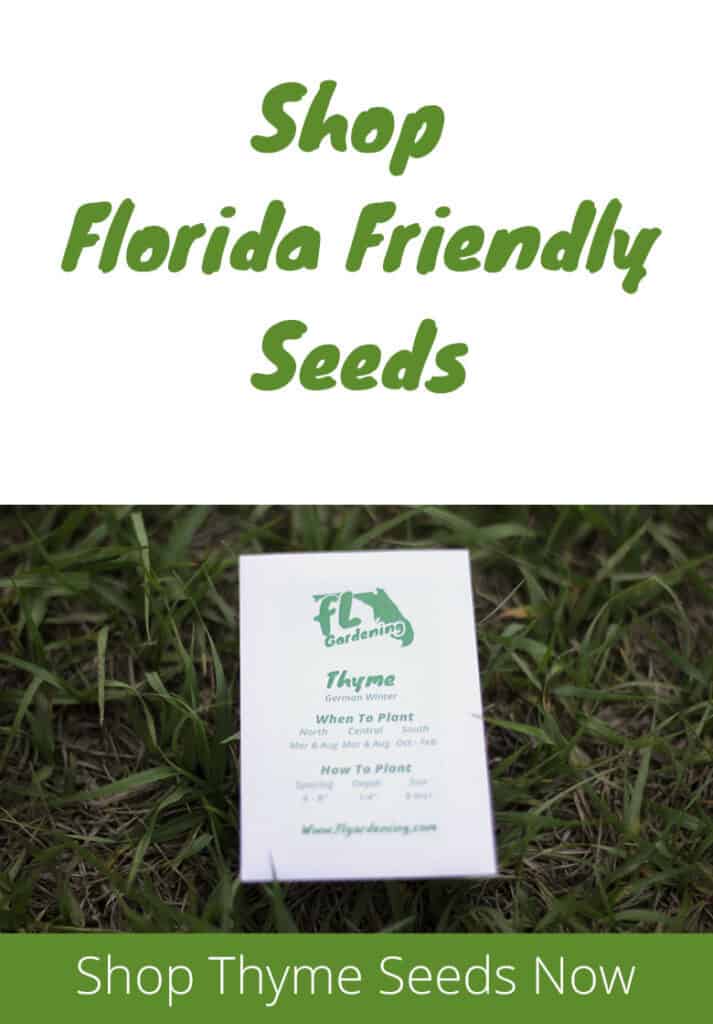
Varieties of Thyme
Thyme varieties are plentiful, ranging from golden to green or variegated. These varieties include:
Common Thyme
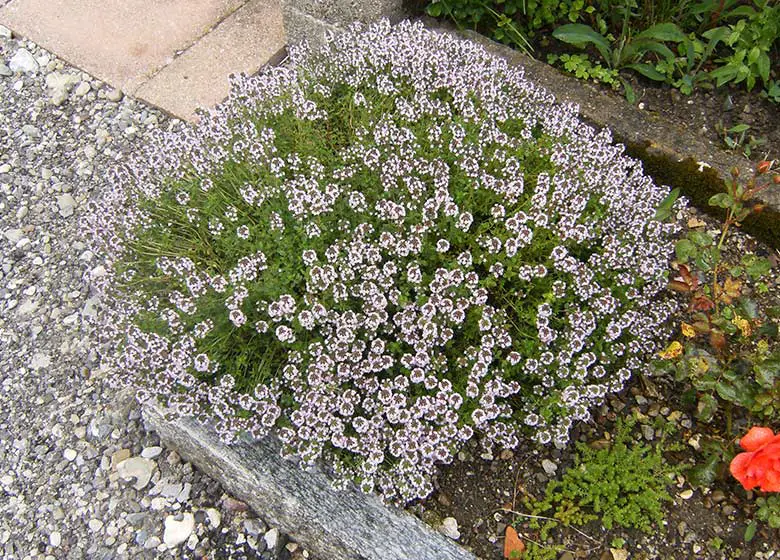
The common thyme (Thymus vulgaris) is commonly used for its decorative and culinary uses. It is a versatile and easy herb to grow. It can be cultivated as a groundcover in your garden, although it can be short-lived.
While common thyme can be produced from seeds, it is more effective to propagate it from cuttings. It will mostly grow to 6-12 inches in height by 16 inches in width.
The common thyme is an evergreen subshrub with grey-green leaves that are highly aromatic. It will reveal pink or purple flowers in early summer. Many hybrids and cultivars have been developed for ornamental uses, and German, French, and English types can differ by color, leaf shape, and essential oils.
Lemon Thyme
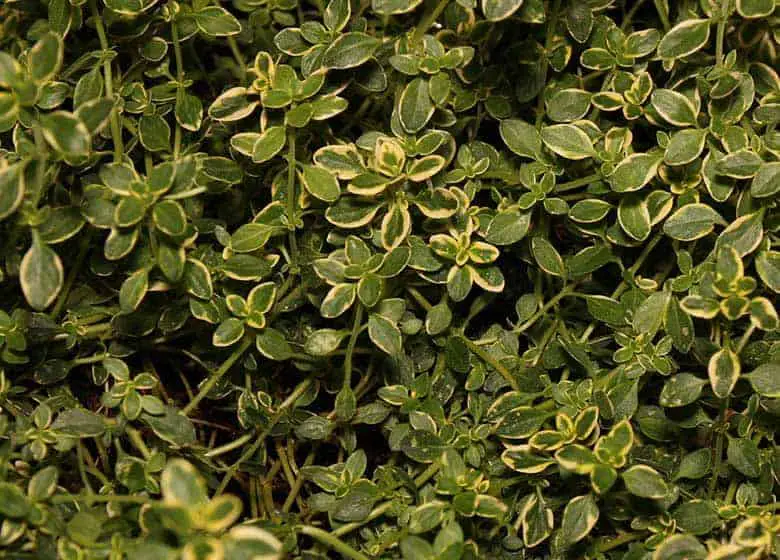
Lemon thyme (Thymus x citriodus) can be used as a border or container plant, and it can be a lovely addition to your herb garden. It is popularly for its culinary uses as well as its attractive foliage. Is it is a bee attractor, and it will facilitate the pollination of other plants.
Lemon thyme is a low-growing evergreen shrub that has lemon-scented foliage. It is easy to cultivate, and it has numerous gastronomical uses. The lemon aroma is at its peak in the morning, which is also the perfect time to harvest thyme. The oils of the plant are an excellent mosquito-repellant.
Woolly Thyme
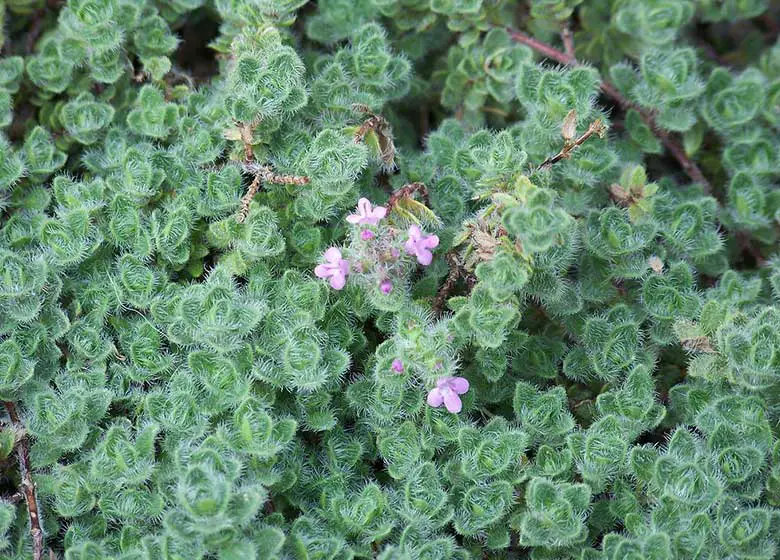
Woolly thyme (Thymus pseudolanuginosus) is a perennial herb, cultivated for its medicinal, culinary, and ornamental uses. It can grow in the cracks between paving cracks, or even in a drought-tolerant garden.
This hardy herb is ideal for hot sunny regions. Once established, it will withstand dry conditions and grow slowly to create a thick mat of foliage. You should, therefore, plant it in an area where spread is desirable. It is low-growing, and will mostly spread to 18 inches in width and 12 inches in height.
Planting Thyme in Florida
The best time to plant thyme in Florida is the early spring. Depending on where you are in the state that will change a tiny bit.
- North Florida: March
- Central Florida: Feb – Mar
- South Florida: Jan – Feb
We also have the opportunity to plant in the early fall as well, but for this particular herb, I think the ideal time is early spring.
Thyme loves heat, and it will thrive in full sun. If you are planting thyme in indoor containers, place it in sunny windows. Ensure that your soils are well-drained if you intend to cultivate thyme in your outdoor garden.
If the soil is soggy or heavy, the plant can develop root rot. The soil pH should be kept between six to eight since thyme favors alkaline conditions.
If building your own soil or planting in a raised bed garden I always recommend a soil that looks something like this:
- 40% Coco coir (Check price on Amazon)
- 40% Compost (You can get it on Amazon but I’ve found it way cheaper at local stores)
- 20% perlite (Check price on Amazon)
- Worm castings (Check price on Amazon)
- Mykos (Check price on Amazon)
Thyme can be grown from seeds, seedlings, and plant divisions. Growing it from seeds is challenging because germination is often uneven and sluggish.
Plant the seedlings in full sun, and when the ground is warm. Plant them in spring, two to three weeks prior to the last frost. Space them 8 to 12 inches apart, depending on the variety.
Growing Thyme
Once the seedlings take off, they will need minimal attention to thrive. Thyme desires little nutrients and over-fertilizing the plants will cause thyme to lose its flavor.
Laying a thick layer of mulch down is super beneficial for growing any plant. Never underestimate the power of mulch!
Let the soil dry completely between waterings. Thyme is a hardy herb, and it is quite drought-resistant. Keep a regular schedule to water the plants, but not often. You can water once the soil around the thyme has become dry, then you can soak thoroughly.
You can also cut thyme back as it grows. If you wish for your plants to keep producing tender stems, there is a need to prune them back to their previous heights every year.
Harvesting thyme should be done before it flowers for the best flavor. You can pluck flowers as you please to facilitate the production of more leaves. The harvested thyme is best dried in a warm and shady area.
Common Pests and Diseases
Thyme is susceptible to root rot, botrytis rot, and other plant diseases. Molds and rots are especially a problem in damp or humid conditions. Ensure that your thyme is not sitting in wet regions during winter. Insect pests that target thyme include spider mites and aphids.
Benefits and Uses of Thyme
The leaves and stems of thyme are utilized in various dishes, either in dried or whole form. It can be included in meat dishes, soups, and sauces, or as a flavorful garnish.
The leaves can be ground into a fine spice. For medicinal uses, thyme can be sourced in the form of essential oil, tea, or supplement.
Thyme has multiple beneficial effects on the body, including in the digestive system. Among the plant’s active compounds is thymol, which stimulates peristaltic muscle movements, to prevent food from being kept in the stomach for too long.
This herb also has antispasmodic actions that can reduce bloating and relieves intestinal cramping. Thyme is a natural diuretic, that is it promotes regular urination to maintain kidney health.
Thyme has traditionally been revered for its respiratory benefits. Plant phenols found in the plant, like carvacrol and thymol are powerfully antispasmodic and subsequently cough-suppressants.
The expectorant and antibacterial qualities of thyme thin the mucus that is expelled by coughs, and heal the bronchial tract. As an antimicrobial, thyme is an effective solution to sore throats.
Thyme also promotes heart health. Its antispasmodic qualities relax arteries and veins, which in turn lowers blood pressure and relieves stress on the heart. Thyme also strengthens and tones heart muscles.
The plant is also loaded with such antiseptic compounds like thymol, camphene, and caryophyllene that will protect wounds from infections and promote healing. Other thyme benefits include mood-boosting, vision health, and improved circulation.
You Will Probably Also Be Interested In This:
